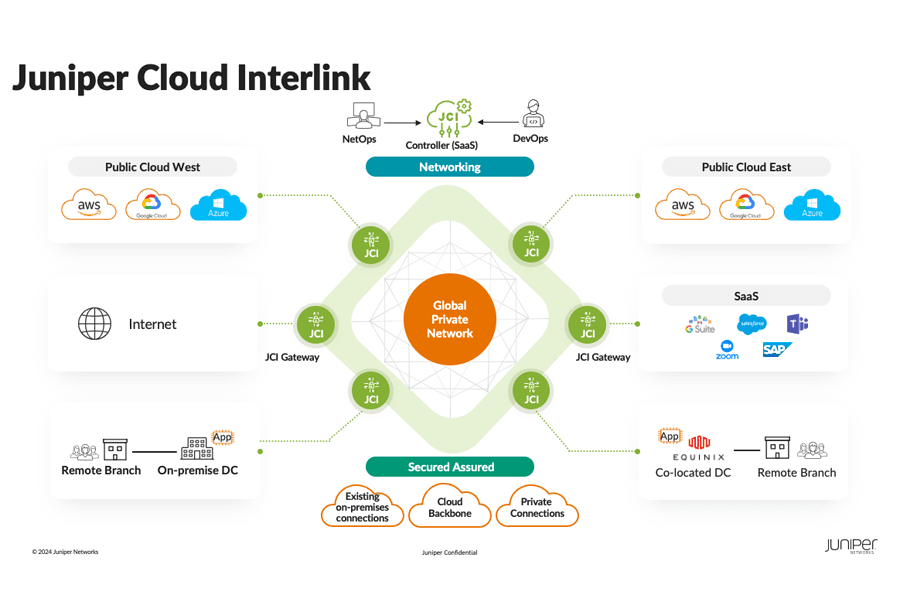This blog was originally published to the 128 Technology website – in 2020, Juniper Networks acquired 128 Technology. Learn more about the acquisition here.
Juniper’s acquisition of 128 Technology is now finalized, and it now seems that even the few early skeptics are seeing the value of the deal for Juniper. For the first time in network history, we’re taking “networks” beyond connecting sites to connecting, assuring, and supporting experiences. The thing I think might still be getting missed by some is the value it has for network users, so I want to highlight what this deal means…for the buyers of network equipment and services.
SD-WAN is an important capability, but as I’ve said many times, it’s really just one application of 128 Technology’s session-aware routing. The small sites that SD-WAN usually targets are often bandwidth-constrained, and session awareness (combined with 128 Technology’s tunnel-less architecture) lets you prioritize and conserve scarce resources. A session, as a user-to-application relationship, is the most granular view of what a network is being used for that you can get, so it’s perfect for bandwidth prioritization. It’s also perfect for a lot more, and the “more” is what Juniper can bring to the table.
Juniper’s AI-driven Enterprise solution, that is powered by Mist AI, is laser focused on both delivering great end user experiences from client to cloud as well as transforming IT operations. It has grown out of initially addressing the challenges that legacy Wi-Fi vendors face, to add support for branch networks overall. By providing AI-based oversight, proactive anomaly detection and self-driving capabilities for the local network, Mist supports users in locations where there’s little chance the company could afford a technical support team.
The symbiosis between these two technologies is clear, and in fact there are several clear points of alignment that will enhance user quality of experience. The first is that 128 Technology’s session awareness gives Mist AI a window into just what a worker is doing, a deeper insight than that they’re running on this or that IP port or with this or that protocol. The second is that 128 Technology gives Juniper an end-to-end view of these critical worker/application relationships, one that extends to the WAN and to the cloud.
Imagine being able to know whether work-from-home collaboration was delivering the necessary quality of experience, knowing a sales team had the performance they needed, or that during an end-of-year blitz, the network capacity to enter orders was there. Imagine knowing that Zoom video was, or wasn’t, impacting branch productivity for non-Zoom workers, or having an AI-driven virtual network assistant to help your IT team uncover issues with accessing any application, by application. Those are all things that users can expect if we combine Mist AI and 128 Technology session awareness. Marvis, Juniper’s virtual network assistant that is built on Mist AI, takes network support to a whole new level.
As good as that is, the second benefit may be better. To a worker, anything that’s not on their desk or in their hand is “the network”. If there’s a problem and their own device isn’t broken, the user says that the network is down. Saying that the local network isn’t down is helpful, but pinning down where the problem is would be conclusive. With 128 Technology, Mist AI has visibility right to the application, whether it’s in the data center, the cloud, or spread across both and with multiple cloud providers thrown in.
Imagine being able to know whether work-from-home collaboration was delivering the necessary quality of experience, knowing a sales team had the performance they needed, or that during an end-of-year blitz, the network capacity to enter orders was there. Imagine knowing that Zoom video was, or wasn’t, impacting branch productivity for non-Zoom workers, or having an AI-driven virtual network assistant to help your IT team uncover issues with accessing any application, by application. Those are all things that users can expect if we combine Mist AI and 128 Technology session awareness. Marvis, Juniper’s virtual network assistant that is built on Mist AI, takes network support to a whole new level.
As good as that is, the second benefit may be better. To a worker, anything that’s not on their desk or in their hand is “the network”. If there’s a problem and their own device isn’t broken, the user says that the network is down. Saying that the local network isn’t down is helpful, but pinning down where the problem is would be conclusive. With 128 Technology, Mist AI has visibility right to the application, whether it’s in the data center, the cloud, or spread across both and with multiple cloud providers thrown in.
The biggest change of all may sound philosophical, but it’s very real and critically important. Before the acquisition, we had Juniper’s traditional IP networks and 128 Technology’s session-aware virtual network riding on top. The acquisition, for the first time, integrates the two. One AI-based support framework covers everything from a worker at home or a small branch, into the cloud, and into the data center. For the first time, network intelligence can control connectivity and also control the real flow of network traffic. That frees up the “virtual network” piece to enhance and personalize connectivity, provide security, and improve user/worker experience, without disconnecting all of this from the real flow of network traffic that Juniper has always done so well.
An example of this is the “Secure Access Service Edge”. Today, security issues in workgroups often create more support problems than network failures or local systems problems. A session-aware data path that implements zero-trust security adds a whole new layer of protection to traditional firewall-based security, even to the point of addressing things like denial of service attacks and hacking, based on unexpected and invalid traffic patterns. Even the attempts at such a breach, when logged and examined by security teams, can be a clue indicating one or more infected systems in a workgroup.


